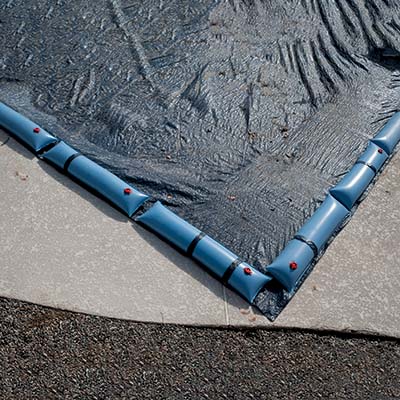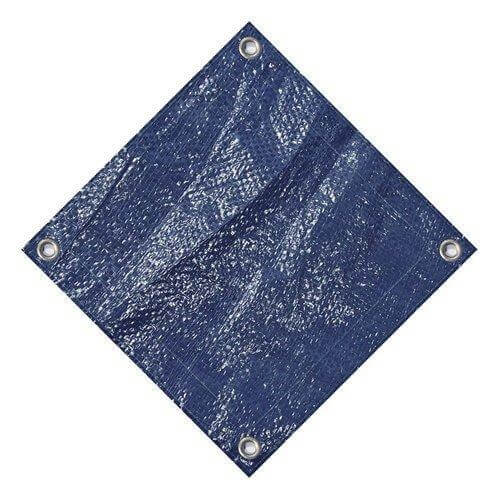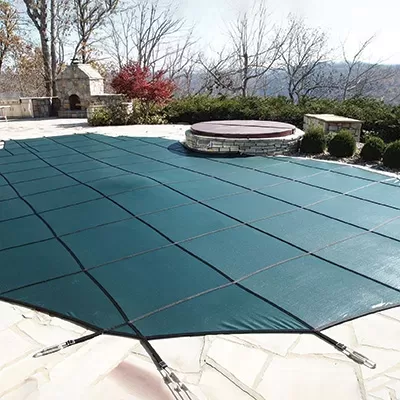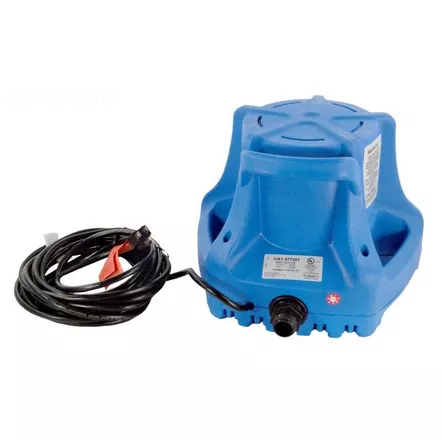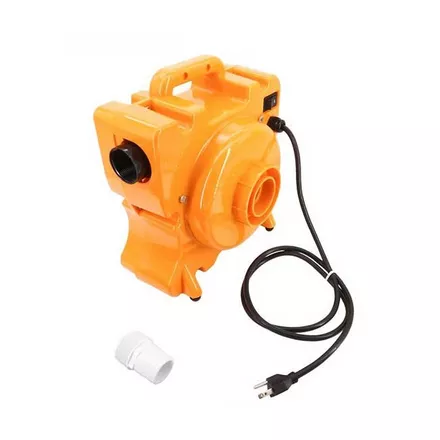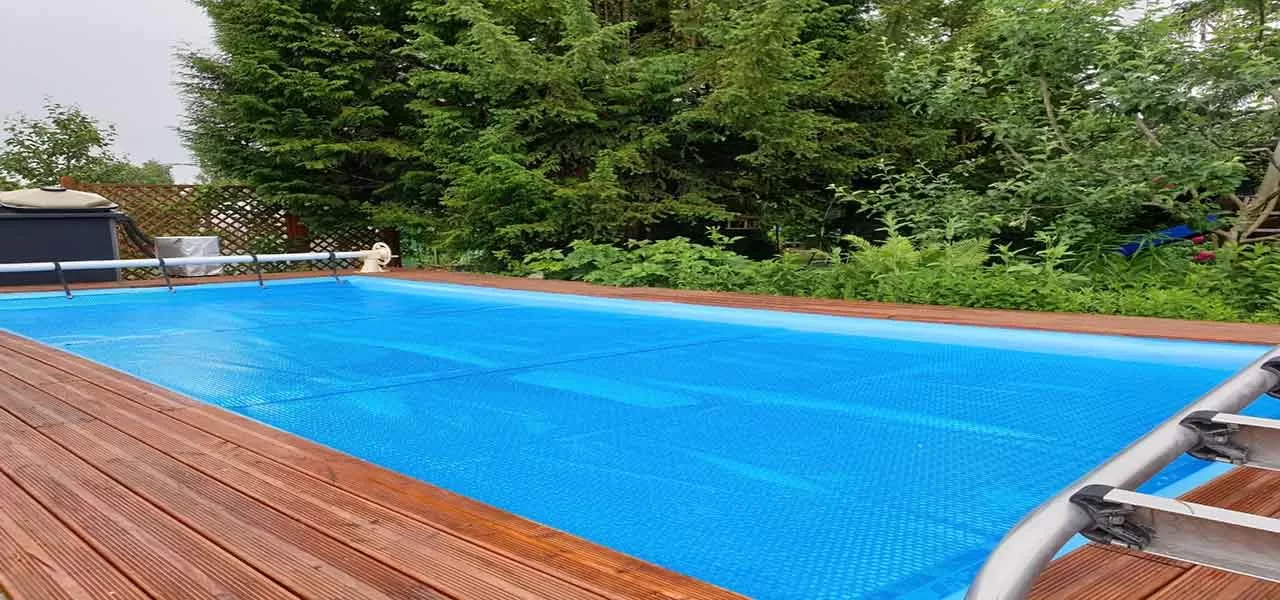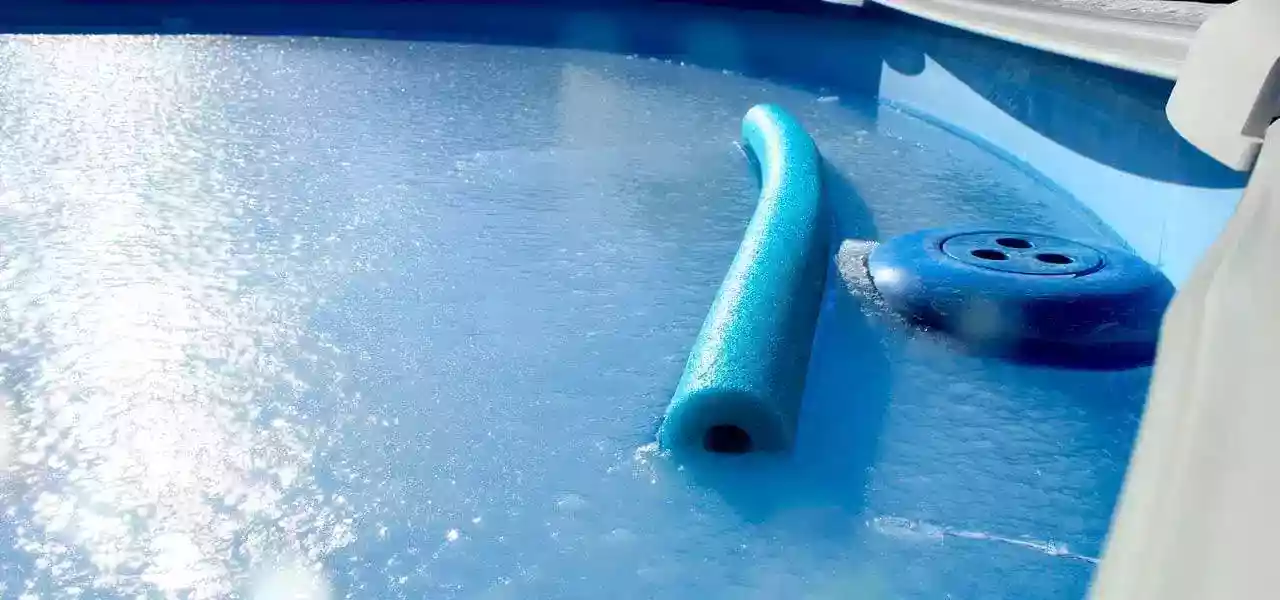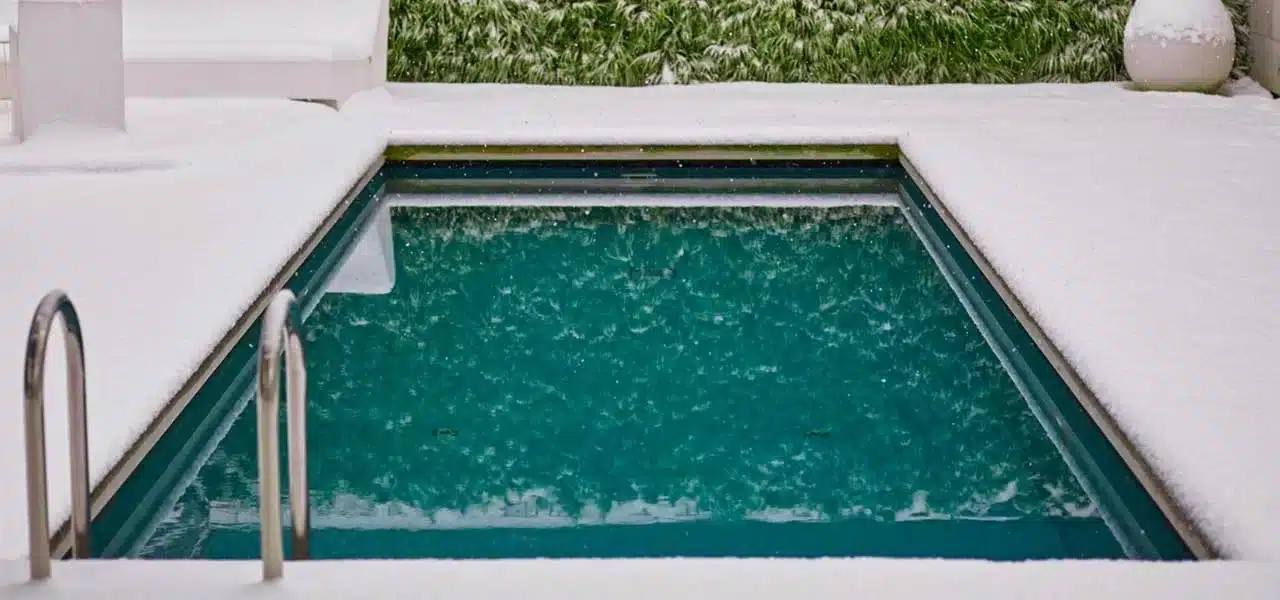In the world of pool maintenance, the quest for efficiency and convenience often leads pool owners to explore creative solutions. A discussed topic in this realm is the dual functionality of automatic pool covers as winter covers.
Can automatic pool covers effectively serve the dual purpose of not only safeguarding a pool during the swimming season but also providing protection during the harsh winter months? In short, there’s no solid yes or no answer. While you CAN use your automatic cover all year round, SHOULD you do it? Probably not.
Let’s explore the factors to consider when contemplating the use of automatic pool covers during winter conditions.
Why You Should Not Use an Automatic Cover During Winter

Snow & Ice

UV Damage

Cold Temperatures
Snow & Ice
The majority of auto cover tracks attach to the underside of the pool coping. If the water level is not high enough, the tracks can be pulled out, or the sewn canvas edges of the cover will tear and rip, under the weight of heavy ice and snow. In northern areas, snow may melt and refreeze before you can pump it off, now you have a heavy slab of ice on your cover, which thaws on the edges to produce sharp edges that can puncture or abrade the cover material. As the ice sheet shifts and moves, it can also puncture or abrade with sharp sticks trapped in it.
Snow, ice, and rain also displace the water in the pool, pushing it over the deep end dam wall, the tiled shelf, which can cause damage to the tile when the water freezes at that level overnight. But more importantly, it lowers the water level in the pool as the water on top of the cover pushes the water under the cover over the tiled shelf, and out the cover box drain. This lowers the water level in the pool, which is needed to support the weight of the cover, and snow and ice. A good automatic cover pump can keep rain pumped off, but it can’t do anything with snow and ice until it melts.
Stains
You are probably averse to stains on your automatic pool cover fabric. Everyone develops water stains around the center, that’s altogether common and somewhat unavoidable, but winter stains are much worse. From leaves in the fall, sticks in the winter, and blooming bits during the spring, along with worms, squirrels and birds – all create work for you to keep the cover clean. A safety cover stays taut like a trampoline, so leaves and debris just blow off.
UV Damage
The sun’s ultraviolet rays are degrading to fabrics, even to reinforced PVC vinyl used on automatic pool covers. If your season is 6 months long, but you use the auto cover for 12 months, you may expect the fabric to be exposed to twice as much UV radiation each year. While it may not wear out twice as fast, it won’t last as long as if you had it safely rolled up on the reel all winter.
Cold Temperatures
Cold temperatures can also degrade soft materials, such as your automatic pool cover fabrics. They tend to make vinyl brittle and stiff, and with greater exposure to cold temperatures, you can expect the fabric to lose plasticizers at a greater rate, and reduce the lifespan of the fabric, and also the cable or ropes. Better to have both fabric and ropes rolled up on the reel during very cold weather, for longevity.
Tile Damage
When a pool freezes solid across the surface, it expands about 9%. Some of the expansion is upward, but some is outward or horizontal. If the water level is below the tiles when it freezes solid, no problem, but if water or snow on the cover raises the water level, the ice sheet can put pressure on the pool tile. This can damage the tile, cracking or popping the tile off in some areas.
And when the water level approaches the perimeter tile band around a concrete pool, which are typically 6″ tall, it also reaches the level of the deep end tile shelf, the dam wall for the cover box. A very common bit of winter pool damage on pools with auto covers is loosening of several square feet of tile on the tile shelf, or dam wall.
If You Do Use an Automatic Cover During Winter
It may be too late this year for you to install a low-cost safety cover, or a solid floating winter cover on the pool. But if you do use your automatic cover during winter, consider these tips:
1. Keep an automatic cover pump in place to remove rain and snow melt as fast as possible.
2. Maintain the water level during winter, adding water as needed; keep it 1-2″ below the tile.
3. Remove leaves and sticks promptly. Consider a leaf net if you have many autumn leaves.
4. When snowstorms or heavy rains are forecasted, open the cover.
5. Clean the cover box of any leaves and be sure cover box drain is not obstructed.
We do not recommend using an automatic cover as a winter cover ultimately. Our advice is to use a safety cover during the off-season and keep your automatic cover safely rolled up.
Seems difficult to have two covers, one for summer, one for winter – but in the long run, it will save you money and effort.


